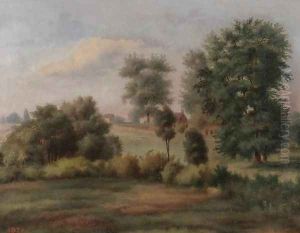August Kollner Paintings
August Köllner, born on November 15, 1813, in Gernsheim, Grand Duchy of Hesse, Germany, was a prolific artist known for his detailed prints and watercolors, particularly of American landscapes and city views. Köllner embarked on his artistic journey in Europe, studying art in Frankfurt under the tutelage of Jakob Fürchtegott Dielmann and possibly at the Städel Institute. His early works were influenced by the romantic spirit of the time, focusing on picturesque landscapes and architectural studies.
In the 1830s, Köllner moved to the United States, settling in Philadelphia, a vibrant city that offered ample opportunities for an artist with his interests and skills. Philadelphia during this period was a hub for cultural and economic activity, and Köllner quickly found his niche. He became best known for his detailed views of American cities, landscapes, and significant architectural landmarks, capturing the essence of urban and rural America during the mid-19th century. His works were not only artistically significant but also served as historical documents of the period's urban and architectural development.
Köllner was adept at both lithography and watercolor, which allowed him to produce works that appealed to a broad audience. His lithographs, often published in series such as 'Views of American Cities' and 'Views of the American West,' were widely distributed, making him one of the foremost documentarians of American scenes in his time. These series provided a visual record of the country's expansion and transformation, showcasing everything from bustling city streets to serene landscapes of the yet untamed West.
Despite his success in America, Köllner maintained ties to Germany throughout his life, contributing to the transatlantic exchange of artistic ideas during the 19th century. He was part of a larger movement of European artists who influenced American art and culture, bringing European techniques and sensibilities to their depictions of the New World.
Köllner's legacy is preserved in numerous collections and museums, and his works continue to be studied for their artistic merit and historical value. He died on October 24, 1906, in Philadelphia, leaving behind a body of work that offers a window into America's past, seen through the eyes of a European artist who made his adopted country the subject of his life's work.
